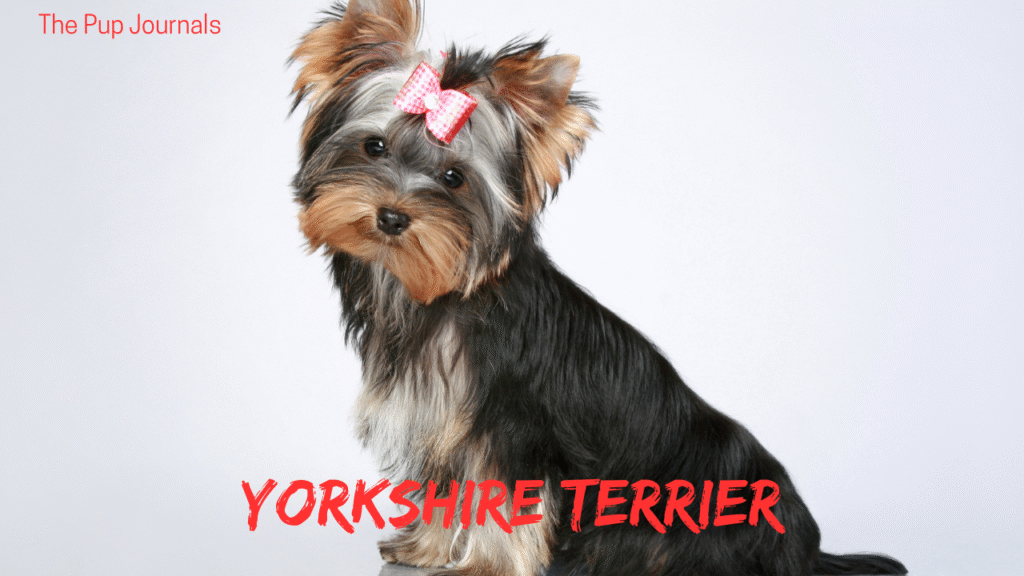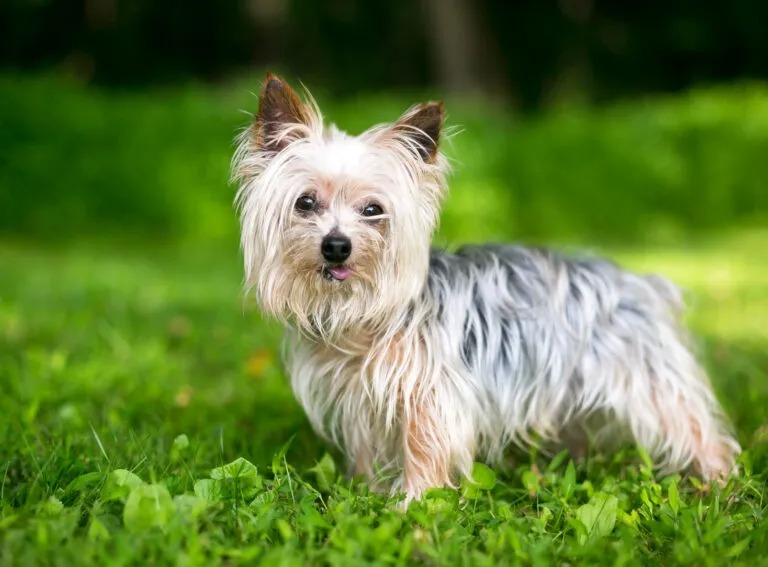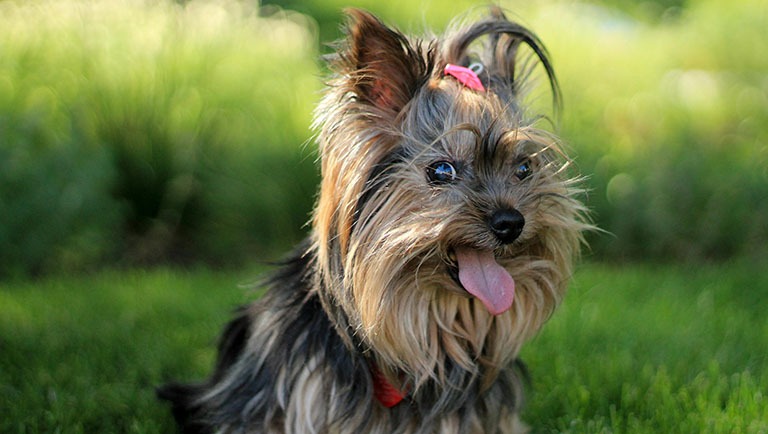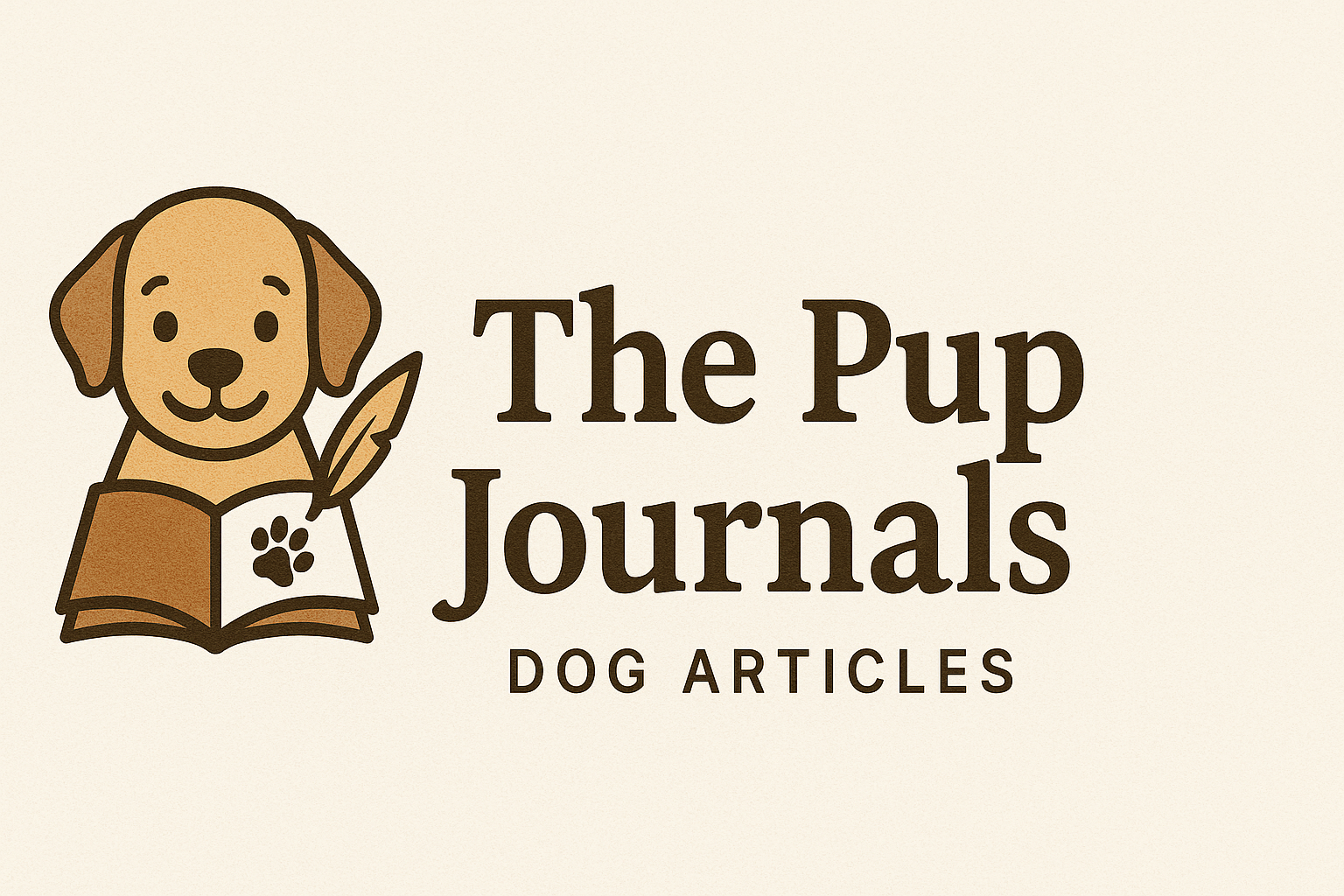
Introduction
The Yorkshire Terrier remains a top favorite among small dog lovers. This guide helps you understand the Yorkshire Terrier breed. You will learn care tips, training steps, and health advice.
We use clear, simple language to explain each topic. Every sentence stays under twenty words. You can use these tips right away.
History and Origin of the Yorkshire Terrier
The Yorkshire Terrier originated in 19th-century England. Miners and industrial workers bred small terriers together. They wanted a rat-catching companion in tight spaces.
The tiny dogs traveled with families to the United States. American breeders refined the breed’s size and coat quality. The Yorkshire Terrier earned official recognition in 1885.
Appearance and Physical Traits
The Yorkshire Terrier stands eight to nine inches tall at the shoulder. It weighs around four to seven pounds. This compact size makes it ideal for apartment living.
Its coat flows long and straight like silk. Many owners tie topknots to keep hair out of the dog’s eyes. Coat colors often appear as blue and tan.
Temperament and Personality
The Yorkshire Terrier shows a brave and confident personality. They think they are larger than their small size. They bond strongly with owners and enjoy close contact.
This breed stays alert and makes a good watchdog. They may bark when they sense strangers. Early socialization helps balance their protective instincts.
Health and Lifespan

Yorkshire Terriers have an average lifespan of 12 to 15 years. Overall, they remain healthy with proper care. Regular vet visits catch issues before they become serious.
Common health concerns include luxating patella and dental disease. Hypoglycemia can affect young puppies if they miss meals. Eye conditions like cataracts may develop with age.
Nutrition and Diet
Feed your Yorkshire Terrier a balanced diet rich in protein. High-quality commercial kibble meets most nutrient needs. Look for formulas labeled for small breeds.
Puppies require puppy-specific food for growth support. Adult dogs can transition to maintenance formulas after one year. Senior dogs benefit from lower-calorie, joint-support blends.
Serve two to three small meals daily to stabilize blood sugar. Always provide fresh water throughout the day.
Exercise and Activity Needs
Yorkshire Terriers need daily exercise despite their small size. Short walks and indoor play keep them fit and happy. Aim for at least thirty minutes of activity per day.
Interactive toys and puzzles challenge their quick minds. Supervised off-leash play in fenced areas promotes healthy energy release. Tired dogs show calmer home behavior.
Training and Socialization
Start training your Yorkshire Terrier puppy early. Use positive reinforcement and treats for quick learning. Keep training sessions short and fun.
Socialize your dog around people, children, and other animals. Puppy classes work well for structured social exposure. Early training reduces fear and aggression later.
Teach basic commands like sit, stay, and come by eight weeks. Consistent practice ensures reliable obedience as they grow.
Grooming and Coat Care
The Yorkshire Terrier’s long coat needs daily brushing to prevent tangles. Use a soft bristle brush or steel comb for best results. Gentle brushing also boosts skin health.
Bathe your dog every two to three weeks with a mild dog shampoo. Rinse thoroughly to avoid soap residue. Towel dry and follow up with a low-heat blow dry.
Trim hair around eyes and paws every week to maintain clear vision and prevent dirt buildup. Regularly check ears for debris and signs of infection.
Dental Care
Small breeds like the Yorkshire Terrier easily develop dental issues. Brush your dog’s teeth daily using canine toothpaste. Provide dental chews to help remove plaque.
Schedule professional dental cleanings with your vet every year. Inspect teeth weekly for tartar buildup or discoloration. Early dental care supports overall health.
Common Health Issues and Prevention
Here are key health concerns for the Yorkshire Terrier:
- Luxating patella: knee cap slips out of place.
- Hypoglycemia: low blood sugar in puppies.
- Dental problems: early plaque and tooth loss.
- Tracheal collapse: weakened airway cartilage.
- Portosystemic shunt: liver blood flow abnormality.
Regular vet checkups and early screenings help detect these conditions. Follow your vet’s advice on tests and treatments.

Ideal Living Conditions
Yorkshire Terriers adapt well to apartment living due to their small size. They thrive in homes with secure, fenced yards for safe play. Avoid extreme temperatures as they tolerate cold and heat poorly.
Provide a warm, comfortable bed in a quiet spot. This breed enjoys snuggling with family members. A consistent daily routine reduces anxiety and promotes good behavior.
Travel and Adaptability
The Yorkshire Terrier travels well due to its small size. Use a well-ventilated carrier for flights or car trips. Bring familiar items like a favorite blanket or toy.
Keep travel schedules consistent to avoid stress. Offer small snacks and water during breaks. Always supervise your Yorkshire Terrier in new environments.
Choosing a Yorkshire Terrier Puppy
Select a responsible breeder with health clearances for parents. Ask for OFA or PennHIP reports on hips and patellas. Review eye certifications from a board-certified ophthalmologist.
Observe the breeder’s facility for cleanliness and puppy care. Evaluate each puppy’s temperament before deciding. Look for an alert, playful puppy with balanced energy levels.
Adoption and Rescue Options
Adopt a Yorkshire Terrier from rescue groups or shelters. Many adult dogs await loving homes. Rescues often assess behavior and health before adoption.
Adoption fees typically cover vaccinations and spay/neuter services. You can give a dog a second chance while gaining a loyal companion.
Breeding Considerations
Breeding Yorkshire Terriers requires in-depth breed knowledge. Prioritize health, temperament, and conformation over appearance. Avoid overbreeding to protect the gene pool.
Ensure puppies receive early vet care and socialization. Provide ongoing support to new owners. Ethical breeding helps maintain the breed’s future health and well-being.
Family and Child Interaction
Yorkshire Terriers bond tightly with family members. They enjoy gentle play with older children who respect their small size. Supervise interactions to prevent accidental injury.
Teach children to approach the dog calmly and avoid rough handling. A well-socialized Yorkie thrives in loving, structured homes.
Safety Tips
Here are safety tips for Yorkshire Terrier owners:
- Supervise play around larger dogs and small children.
- Use a secure harness for walks to protect fragile tracheas.
- Keep small objects out of reach to avoid choking hazards.
- Monitor outdoor play to prevent escapes.
Proactive safety measures keep your Yorkshire Terrier happy and healthy.
Seasonal Care
Adjust care for seasonal changes when owning a Yorkshire Terrier. Offer a warm sweater in winter for extra insulation. In summer, provide cooling mats and shade during afternoon heat.
Avoid hot pavement that can burn paw pads. In spring and fall, watch for seasonal allergies and adjust grooming frequency accordingly.
Mental Stimulation and Enrichment
Yorkshire Terriers have sharp minds and high curiosity. Offer puzzle feeders and treat-dispensing toys to challenge them. Rotate toys weekly to maintain interest.
Teach new tricks and agility exercises to boost mental fitness. A mentally stimulated Yorkie shows fewer unwanted behaviors at home.
Senior Yorkshire Terrier Care
As your Yorkie ages, adjust care routines accordingly. Provide soft bedding for comfort and joint support. Lower-impact activities like gentle walks help maintain muscle tone.
Switch to diets formulated for elders to support joint health. Schedule biannual vet visits to monitor age-related issues.
Traveling with Your Yorkshire Terrier
When traveling, pack familiar items like toys and bedding. Keep your dog’s routine as consistent as possible. Offer meals and walks at regular times.
Use a comfortable carrier that meets airline standards if flying. Secure your Yorkie in the car with a crash-tested pet harness.
Choosing the Right Accessories
Invest in quality accessories for your Yorkshire Terrier:
- Harness: spread pressure away from the neck.
- Soft dog brush: protect delicate coat.
- Dental chews: promote oral health.
- Interactive toys: engage your dog’s mind.
High-quality accessories improve care and comfort.
Conclusion
The Yorkshire Terrier offers a blend of loyalty, charm, and spirited energy. This breed thrives with proper care, training, and socialization. Follow these tips for a happy, healthy life together.
Read More: Pug Dog Breed: Your Complete Guide

